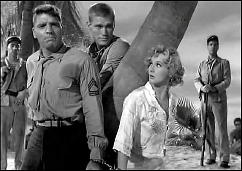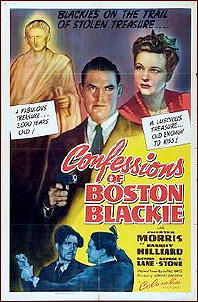Sat 8 Apr 2017
Mystery Stories I’m Reading: DOUG ALLYN “Animal Rites.”
Posted by Steve under Magazines , Stories I'm Reading[7] Comments
DOUG ALLYN “Animal Rites.” Published in Ellery Queen Mystery Magazine, July 1996. Reprinted in All Creatures Dark and Dangerous (Crippen & Landru, 1999).
It cannot be easy to write a full-fledged detective story in the confines of a short story or even a novelette, but this issue of EQMM has at least three that qualify, the best of them being this 26 page tale by Doug Allyn, who has been a regular contributor to the magazine since 1985.
“Animal Rites” was the third appearance of Dr. David Westbrook in the magazine. Westbrook was an animal veterinarian whose office was located in the northern end of Michigan’s lower peninsula, not far (I can easily imagine) from the small town where I grew up. It is hard to say how many stories could be placed in such a protagonist in such a setting, but Allyn managed to write nine of them, seven of them included in the collection published by Crippen & Landru in 1999. (Two appeared after the book came out.)
In this particular tale, David is caught between two sides of a panel debate on live TV. The topic is the hunting of animals for sport, yes or no? Tempers are raised, a confrontation breaks out, and the next day one of the participants is dead. One of the others confesses, but based only on their instincts, neither David nor the local sheriff is convinced.
It takes a vivid dream to bring into his consciousness the clue David needs to solve the case, but the reader can easily pick up on it as well. The characters are interesting, the setting (to me) like home, and a reasonably fair mystery. All the right ingredients.
Another good detective story is this issue is “The Thief of Nothing,” by Jeffry Scott, in which Detective Inspector Scipton agrees to help an elderly lady who is convinced that someone is continually breaking into her home, but never taking anything. Scipton helps solve the case, but surprise of surprises, another one as well, plus (and a big plus) in the course of the events he meets a woman who may be the one he’s looking for. At least she thinks so.
I’m not sure how many stories the late and much missed Edward D. Hoch wrote about Nick Velvet, a thief noted for never stealing anything of value, a fact agreed upon even by the police. In “The Theft of the Bogus Bandit,” Nick is forced to keep that reputation as rock solid as ever when an imposter using his name begins a spree of holdups in which not only does he steal diamonds and the like, but while doing so also severely attacks the people he is stealing from. Nick, naturally, is outraged.


